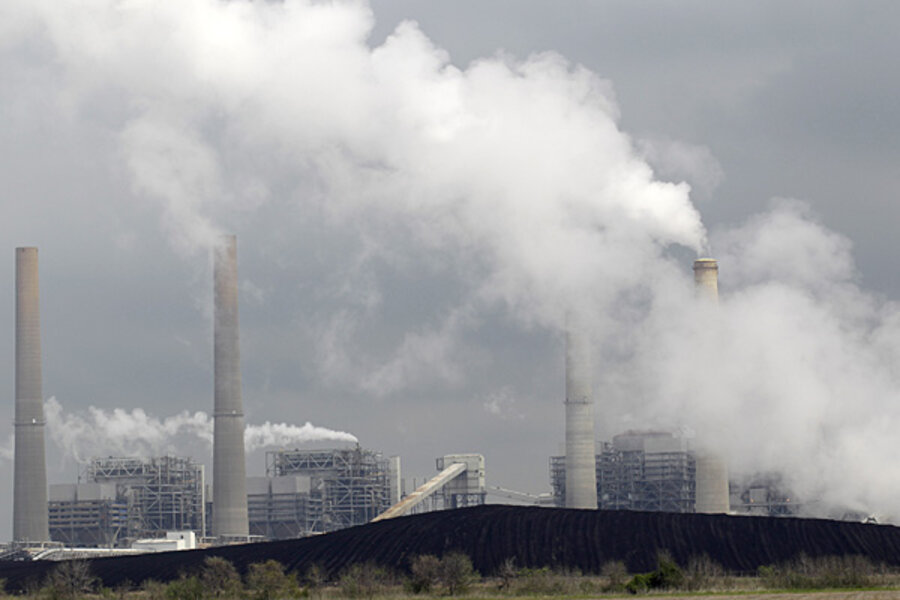EPA squelches soot. First step in a deluge of regulations?
Loading...
The US Environmental Protection Agency (EPA) introduced new standards Friday that aim to reduce the amount of soot released into the air by 20 percent.
The annual health standard will be lowered from 15 micrograms of fine-particle pollution per cubic meter down to 12.
The move may have broader implications, as well. Energy companies and environmental activists are watching closely to see if the new standard is the beginning of many bold environmental moves by President Obama in his second term. The administration has been tight-lipped on the subject.
“These standards are fulfilling the promise of the Clean Air Act. We will save lives and reduce the burden of illness in our communities, and families across the country will benefit from the simple fact of being able to breathe cleaner air,” said EPA Administrator Lisa P. Jackson in a statement.
But the American Petroleum Institute is warning of what it calls an impending "regulatory cliff."
"The collective impacts of these and other potential new regulations at a time when 12 million Americans are still unemployed would be a blow to our economy as it struggles to recover and put Americans back to work," Howard Feldman, API's director of regulatory and scientific affairs, said in a statement. "It makes no sense to risk economic harm when the public health necessity of these regulations is ambiguous at best."
Current regulations, Mr. Feldman said, could reduce particulate pollution by more than 20 percent in the next couple of years while steadily reducing the number of Americans living in areas exceeding the current standards.
The EPA does not wholly disagree. Ninety-nine percent of US counties will meet the standard without any additional action, according to the agency's estimates.
That doesn't mean the standards are without costs. The EPA puts the price tag at between $53 million to $350 million per year, but says the failure to reduce soot would cost exponentially more in health-related expenses. Health benefits derived from the new standard will range from $4 billion to over $9 billion per year, according to the EPA.
The announcement was a victory for various environmental and health groups advocating for the improved standards, which were last updated in 1997. A federal court gave the EPA a Dec. 14 deadline to issue an update after the agency failed to meet the Clean Air Act's scheduled five-year review.
"We know clearly that particle pollution is harmful at levels well below those previously deemed to be safe," Norman Edelman, chief medical officer for the American Lung Association, said in a statement Friday. "By setting a more protective standard, the EPA is stating that we as a nation must protect the health of the public by cleaning up even more of this lethal pollutant."
Throughout the presidential election, some Republicans accused the EPA of withholding new regulations until after the election.
"As the nation struggles to recover from a lagging economy in the coming year, Americans could also be grappling with a regulatory onslaught from the Obama-EPA that will strangle economic growth, destroy millions of jobs, and dramatically raise the price of goods, the cost of electricity, and the price of gas at the pump," read an October 2012 report from the Republican minority staff of the US Senate Committee on Environment and Public Works.
Until now the administration has been largely mum on the subject, except for assertions that climate change is real and needs to be addressed in a way that does not harm economic growth.
During his first post-reelection press conference, Mr. Obama told reporters they would hear more from him on the topic of climate change.





